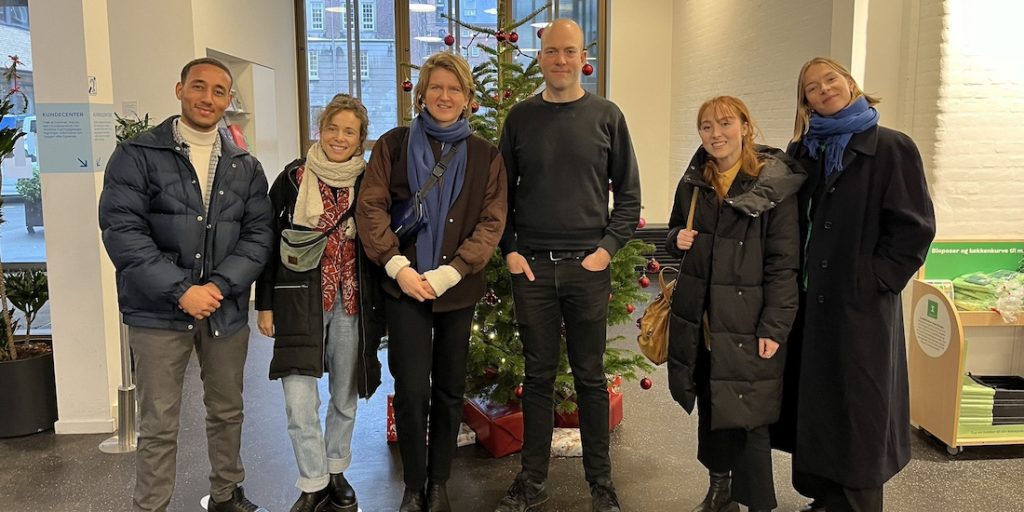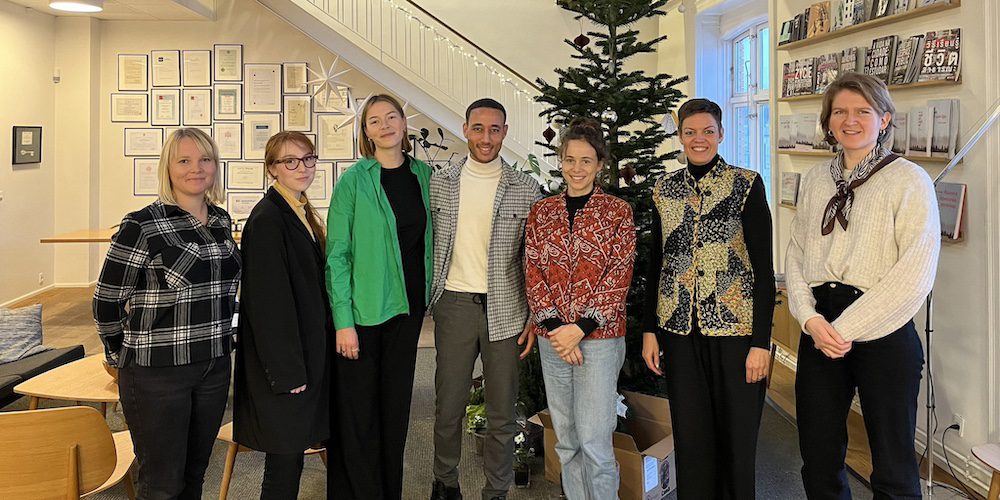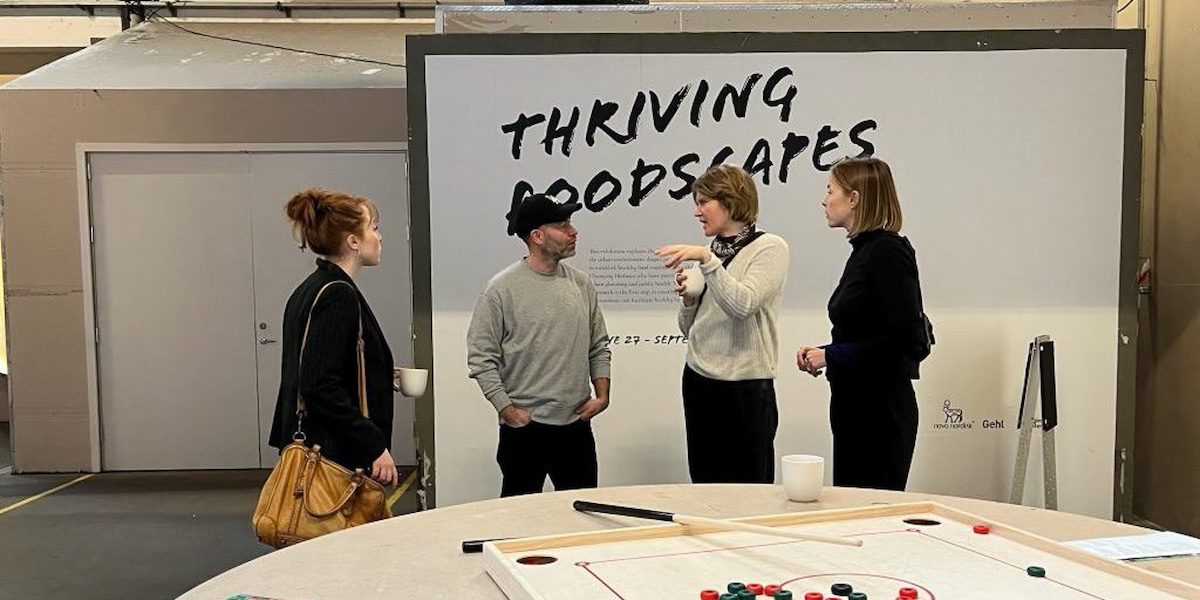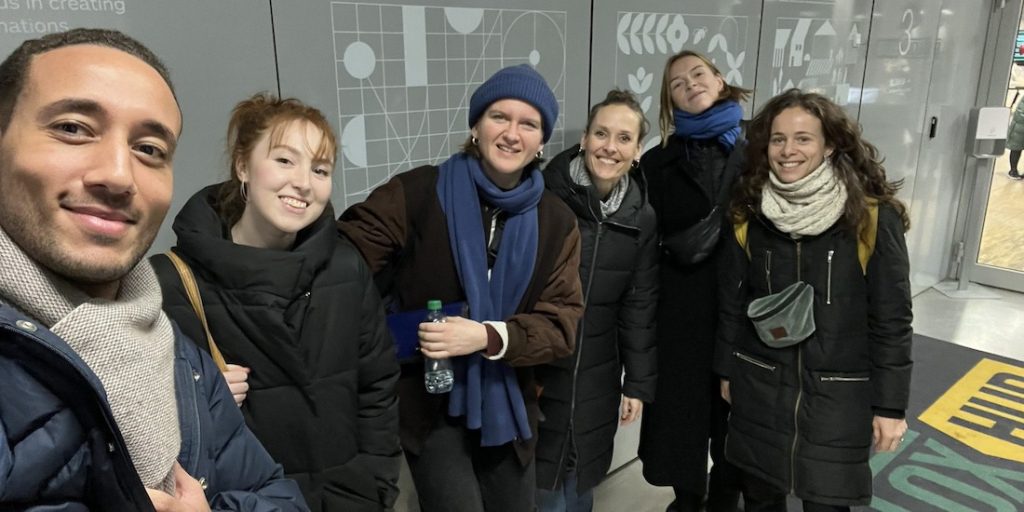Copenhagen is a historic port and trading city. Famous for its inventors, it has for years been a prime example of how cities can reconcile ambitious climate goals with being a liveable city. In the last decade alone, the city has grown by a fifth, yet managed to almost halve its harmful CO2 emissions.1 An eclectic mix of measures, including renewable energy, a circular economy, 385 kilometres of cycle paths through the city and much more, have contributed to this. But what about digitalisation? How is Copenhagen preparing for the future?
At the end of a full and eventful year at CityLAB Berlin, we had the opportunity to get to know Denmark’s capital at the invitation of some key players. We set off on our short trip to Copenhagen in December full of expectations – and we were not disappointed! We had exciting meetings with a wide range of organisations from government, civil society and business that are working on issues related to digitalisation and sustainable urban development in Copenhagen.
With a few questions in mind, we wanted to find out which topics might be of interest to Berlin in terms of smart city development and whether we could draw inspiration for our work at CityLAB. Our travelling group, consisting of staff from different disciplines, from transformation managers to service designers, gave us very different perspectives. Below we would like to share some of the impressions we gained in Copenhagen, including…
How to Create an Interface and a Trusting Working Relationship
The Copenhagen Solutions Lab acts as an interface between the municipality’s needs and the technical solutions of various suppliers. There is a large network of companies in the vicinity of the Copenhagen Lab and short paths to internal administrative contacts. Located within the City of Copenhagen, the lab is an agile matchmaker between problems and solution providers and appears to work in a trusting relationship with the city’s departments. It was very interesting to learn more about national and international networks, such as the Nordic City Network, from which the Innovation Lab seeks inspiration for solutions.
“A good exchange between two innovation labs! It was remarkable how openly the Copenhagen Solutions Lab shared experiences and assessments of working at the interface between government, business and urban society. One challenge seems to be the lack of rules and processes for cooperation between the public sector and businesses. More and more cities are working with administrative or internal labs to implement digital projects across departments. In a meeting that was unfortunately too short, we concluded that the exchange of ideas and technical and social solutions between cities will become even more important in the future.“
Yannick Müller, Strategic Partnerships CityLAB Berlin

Why we need a New Way of Tackling Systemic Problems
Issues such as quality of stay or air quality cannot be addressed and ticked off in a single project. This complexity needs to be addressed at different levels. Putting human well-being at the heart of urban planning and design is a major challenge for the cities of the future. Gehl architects use their strategic knowledge, data and design to develop tailored solutions for cities and communities. It is important that all individual projects are embedded in overarching strategies and are measurable. With experience from more than 350 communities and cities, there are now good benchmarks for comparison.
“Gehl People are known worldwide for their focus on creating people-centred cities. Talking to Helle and Liselott was enlightening, as they shared how they create exceptional examples of liveable, green, and people-friendly places in their work. Their approach combines quantitative data, digital mapping tools, and qualitative analyses to develop urban squares, streets, and residential areas that people enjoy spending time in and engaging in various activities. They frequently use prototyping or employ tactical urbanism and placemaking techniques to gradually discover what works best for people in each location.”
Anne Kruse, Transformation manager CityLAB Berlin

Where and How People Collaborate to Build Cities
A new area is being developed in the Jernbanebyen neighbourhood of Copenhagen. The Spor10 initiative aims to promote growth of both infrastructure and community in the new ‘Railway City’ by providing a variety of sports and creative activities for people of all ages from the surrounding neighbourhoods. The site aims to strengthen the sense of community and enable participation and dialogue about the planned construction project through information events. Community Manager Daniel Mlka explains how the former logistics halls are creatively and flexibly used and how the weekly community formats are organized. The attention to detail is evident, particularly in the mobile sauna that has been brought to the site.
“Not everyone is comfortable with the anonymity of big cities. I found inspiration in Spor10’s community concept, which offers a wide range of opportunities. This creative approach to temporary use not only involves sports clubs and other civil society groups but also creates space for topics such as mental health and nutrition. The planning process will involve current user groups extensively and they will also be included in the future concept. This truly puts people at the centre of neighbourhood development!”
Emma Becker, Potsdam University of Applied Sciences

How to give Good Ideas the Space they Need
The Danish Outdoor Lighting Lab (DOLL), which started in 2014, has now evolved into the DOLL Living Lab. It not only creates prototypes for street lighting but also concentrates on intelligent transport systems, environmental monitoring technologies, and data management. DOLL collaborates with companies and universities to test and enhance Smart City solutions. Around 60 projects have been successful in developing suitable solutions for Danish cities through the ‘We build Denmark‘ innovation ecosystem, which brings together business, science, and continuous learning. The DOLL Living Lab serves as an international testing ground and is involved in European projects such as the Digital Europe Programme, Net Zero Cities, and CitComAI, which address topics like digital twins and artificial intelligence. The Fiware Open Source Framework‘s standards and recommendations are also followed.
“It is impressive how a small team can act as a platform with a huge network to support and drive numerous urban projects. Jacob from the DOLL Living Lab highlights that smart city solutions in Copenhagen focus on data standards, energy consumption, and climate aspects. They also measure and address important correlations, such as the effect of lighting systems on local biodiversity. Once again, it was emphasised how important good data standards are for collecting, sharing, and protecting data.”
Henriette Närger, Product Owner Gieß Den Kiez, CityLAB Berlin

The Benefits of Consolidating an Ecosystem
Bloxhub is a collaborative space for sustainable city development, housing the Danish Design Centre, the Danish Architecture Centre, and a large coworking space for private, public, and local stakeholders. The network comprises around 420 members, who can work with a 35-strong team in the glass cube located in the centre of Copenhagen. The core team is divided into two halves: one builds communities and networks, while the other activates and shares knowledge from the network. According to Martine Kildeby, Head of Community Management, Bloxhub’s approach is solution-oriented rather than technology-focused. Cities and companies worldwide can seek assistance from Bloxhub with urban problems. Bloxhub provides help in formulating the right questions, deeper and differentiated perspectives on the topic, and concrete solution proposals from experts. Despite cultural differences or varying interpretations of the smart city concept, global benchmarks and empirical knowledge can be used to achieve success.
“At Bloxhub, designing smart, sustainable, and liveable cities ‘the Nordic way’ involves combining each product with a design process, collaborating in broad networks, and learning from one another. Local partners are preferred for optimal results. Collaboration is encouraged in modern, attractively designed premises, with formats and contact persons available on-site for every level of a problem. Suitable teams are available at all levels, from EU to local initiatives, for getting to know each other at topic-specific network meetings, design processes, or the development and implementation of a specific solution. This concept seems to be effective and you can start immediately!”
Anja Lüttmann, Smart City-Designer CityLAB Berlin

Conclusion
Copenhagen serves as a model for urban development and digitalisation, providing inspiration for our team. Our discussions reminded us of successful examples from our community and projects, where experimentation and collaboration have proven effective. There are certainly some relevant points of reference.
Helle Søholt, CEO of Gehl Architects, emphasises the urgent need to transform cities and spaces in order to design sustainable cities for people. Digital tools can help in this process. Participation and climate neutrality are complex but central building blocks of a new urban culture. High quality data and serious participation can help reconcile conflicting goals. Design that is strategic, user-centred and planet-centred is essential to achieve this goal.
Overall, the trip provided us with a new perspective on the topics we deal with at CityLAB. Upon reflection, it became evident that a functional exchange within urban and cross-border networks is crucial. Now that we are back at CityLAB, we are excited about the collaboration with you on our 2024 projects. Stay tuned.
Mange tak, København!
– Thank you very much, Copenhagen!
Source:
- Carbon emissions, Copenhagen, 2005-2025: https://www.researchgate.net/figure/Carbon-emissions-Copenhagen-2005-2025_fig2_360260464 ↩︎
